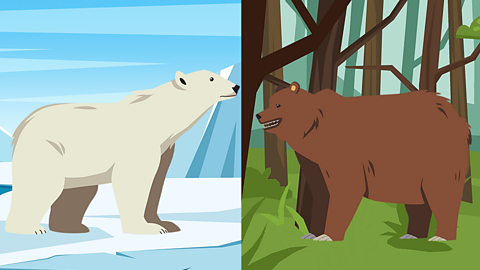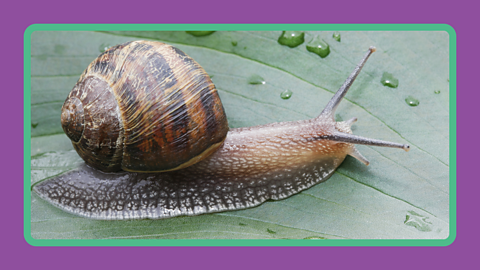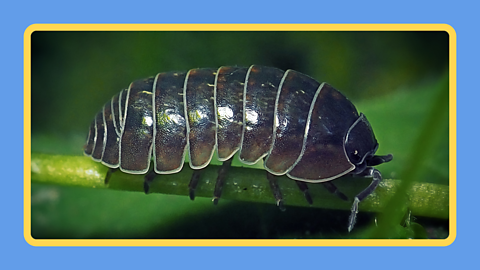
What are minibeasts?
Minibeasts are small living things.
Minibeasts can be…
- insects, like flies and ants
- crustaceans, like woodlice
- molluscs, like slugs and snails
- or arachnids, like spiders and mites.

Watch: Microhabitats and minibeasts
Anna: Habitats are all around us. A habitat is where animals and plants live and get everything they need to survive. Like food, water and shelter.
Some habitats are really big, like rainforests!
The Amazon rainforest is green, wet and full of animals. And some habitats are dry and sandy, like the Sahara Desert.
Only a few animals have adapted to this habitat because it's so hot. But there are also small habitats in our schools, parks and gardens called microhabitats.
This botanic garden is wildlife-friendly and we can find lots of different microhabitats.
Under rotting logs and leaves where it's damp. In trees and bird boxes. Stone piles where it's dark. Ponds and puddles. And even in bug hotels.
Within microhabitats, we can find many different types of minibeasts like woodlice, spiders, worms, snails and moths. All of them are tiny creatures that live in small places. Minibeasts live in habitats that are best suited to them.
Take these woodlice, for example - they've adapted to live in rotten wood because it's damp, dark, and a safe place to hide.
Why don't you think about designing a wildlife-friendly garden? What different microhabitats would you include, and what minibeasts might you find?
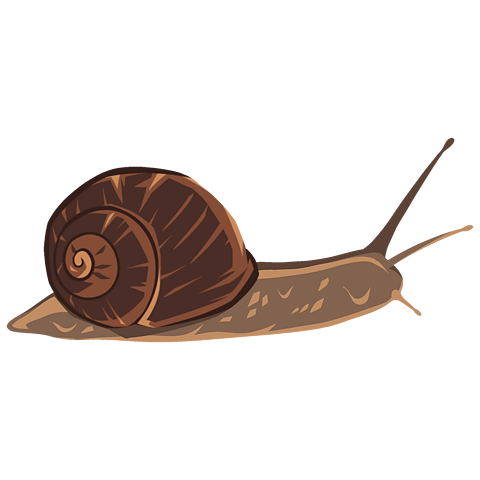
Marvellous minibeast facts
All minibeasts are invertebrates which means they do not have a backbone.
To protect themselves, some minibeasts have shells, like snails.
Some have a hard outer layer called an exoskeleton. Ants, woodlice and spiders all have exoskeletons to keep them safe.
Most minibeasts have antennae on their heads, sometimes also known as feelers.
Some minibeasts like ants live as part of a colony, living and working alongside many other creatures.
Most minibeasts are herbivores.
There are all sorts of minibeasts living in your home, from ants and spiders to woodlice and mites.
Minibeasts form the diet of many UK animals, such as bats, hedgehogs and frogs.

Watch: Magnificent minibeasts
Explore the world of magnificent minibeasts.
If I asked you to name your favourite animal, you probably wouldn't pick a worm or a beetle or an earwig.
And that's a shame because minibeasts are amazing.
Caterpillars can be plain or patterned, hairy or smooth. But one thing that they all have in common is that they eat lots. These small green one will keep munching until all the leaves have gone.
Spiders don't eat leaves. Instead they eat creatures that they catch in their webs. With eight legs, they can move quickly to reach the insects they've caught.
An animal which eats other animals is called a carnivore.
Centipedes are carnivores too. They have two fangs which release poison and they use these to stop their dinner getting away. Each tiny section (or segment) of a centipedes body has two legs so it has lots and lots of legs along the length of its body.
Millipedes also have lots of legs, four on each body segment. They can move really fast! But they don't need to hunt because millipedes only eat plants and leaves. They are herbivores.
Earthworms stretch and pull themselves through soil. The tiny tunnels they leave behind makes the soil crumbly and good for growing things in.
Gardeners love earth worms but not slugs.
With thousands of tiny teeth, slugs eat the gardeners favourite plants. Slugs are covered in slime to help them move across dry things.
Inside its hard shell, a snail is slimy too. These stripy shells belong to bandit snails. The stripes help the snail to hide in the grass and stay safe.
But these beetles want to be seen. Their bright red wings warn hungry birds that ladybirds won't taste good.
Earwigs help to keep a garden tidy by eating dead leaves and plants. They have tiny wings but hardly ever fly.
Stag beetles look fierce but they only eat nectar and rotting fruit. They buzz loudly when they fly on summer evenings but they won't hurt you.
Minibeasts are amazing and many are really useful.
Can you remember all the minibeasts that you saw in the video? How many of them can you name?
How did you do? Could you remember all ten?
In the video we saw:
- Caterpillars – they change to become beautiful butterflies.
- Spiders – they are arachnids and have eight legs.
- Centipedes – not all of them have a hundred legs.
- Millipedes – they are some of the oldest insects in the world.
- Worms – they have no arms and legs.
- Slugs – they have two feelers on their head.
- Snails – they carry their home in a shell on their back.
- Ladybirds – they can have up to twenty two spots.
- Earwigs – they can deliver a painful pinch!
- Stag beetles – they get their name from looking like a male deer.
Different types of minibeast
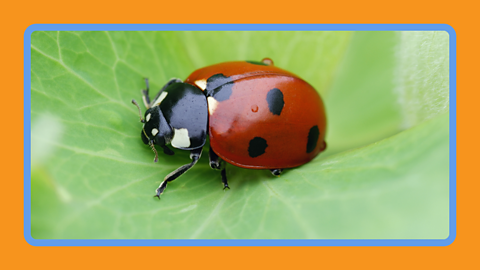
Image caption, Ladybird
Ladybirds are insects. You can find them living in shrubs and trees. Ladybirds are carnivores, and eat small insects called aphids.
1 of 4
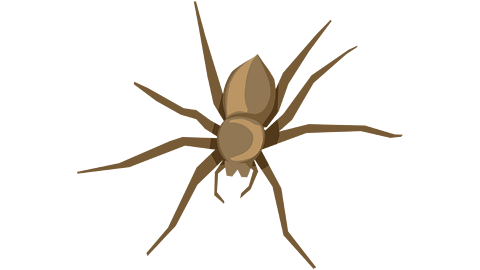
Did you know?
Arachnids are a group of minibeasts that include spiders, scorpions, ticks, and mites. All arachnids have eight legs, unlike insects which have six.
The largest spider in the world is the Goliath birdeater. It can grow up to 13 centimetres in length and weigh around 175 grams. It is big enough to eat birds, as well as small mammals, amphibians and even snakes!

Watch: What are minibeasts?
Learn some facts about minibeasts.
It’s easy to forget that we’re surrounded by hundreds and thousands of tiny little creepy crawlies called minibeasts.
Minibeasts can also go by the more scientific term, invertebrates. This includes insects, crustaceans, millipedes and centipedes, even arachnids.
Being an invertebrate means they don’t have backbones like us. Instead, some have soft and slimy bodies, or some have shells, like snails.
Some minibeasts have a really thin but super strong layer on the outside of their bodies. Creatures like ants, woodlice and even spiders all have this hard layer and it’s called an exoskeleton. It protects their squidgy bodies underneath!
So, next time you’re out in the garden, or at the park, or at the beach, look under rocks, in bushes, on trees, or flowers, or the soil. You’re bound to see some minibeasts. They’re everywhere!
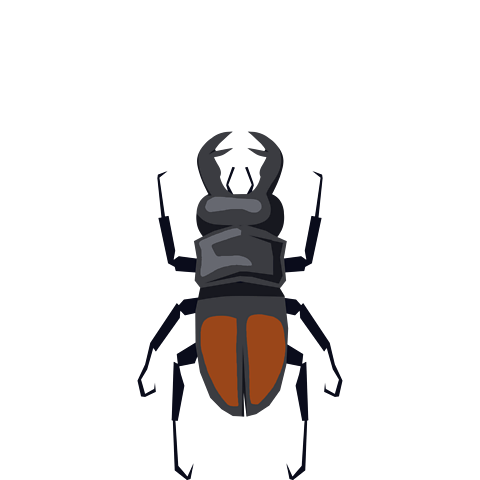
Important words
Antennae – Insects use antennae for touch, to detect heat and to taste and smell.
Arachnid – All arachnids have eight legs and their bodies are split into two parts and, unlike insects, have no wings or antennae.
Carnivore – Animals that eat meat. Dragonflies and damselflies are carnivores, as well as ladybirds and spiders.
Colony – Insect that live closely with others from the same species.
Crustacean – Crabs, lobsters, shrimp and woodlice are all examples of crustaceans. They're a classification of animals which are known for having hard shells, or exoskeletons, on the outside of their bodies.
Exoskeleton – An exoskeleton is a hard covering that supports and protects the bodies of some types of animals. The word exoskeleton means “outside skeleton.
Herbivore – An animal or insect that mainly eats plants. Most minibeasts like woodlice and stag beetles are herbivores.
Insects – The body of an insect is divided into three parts. Insects have six legs, and sometimes wings. Bees, ants, butterflies and beetles are all types of insect.
Invertebrate – Animals that don't have a backbone.
Omnivore – Animals that eat both plants and meat. Ants eat plants and fungus, as well as other insects.

Activities
Activity 1 – Spot the minibeasts
Activity 2 – Minibeasts quiz
Activity 3 – Minibeast hunt
With an adult, go on a minibeast hunt around your home or local park.
Look for as many different minibeasts as you can find. Use the worksheet to help you identify some of the minibeasts you might see.
Remember. Minibeasts like to live in dark, damp areas so you might need to look under stones, in trees or bushes, or under fallen leaves.
Easter Holidays Activity Pack activity
Check out some Easter inspired activities to complete in the Easter Holidays, for KS1.

More on Animals including humans
Find out more by working through a topic
- count8 of 12
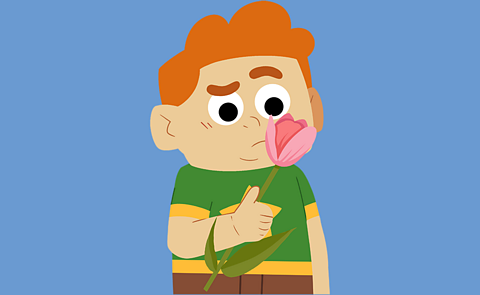
- count9 of 12
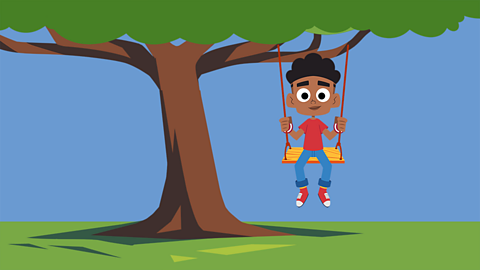
- count10 of 12
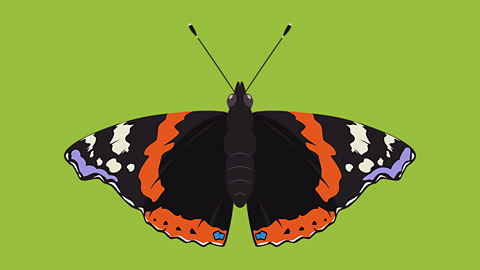
- count11 of 12
